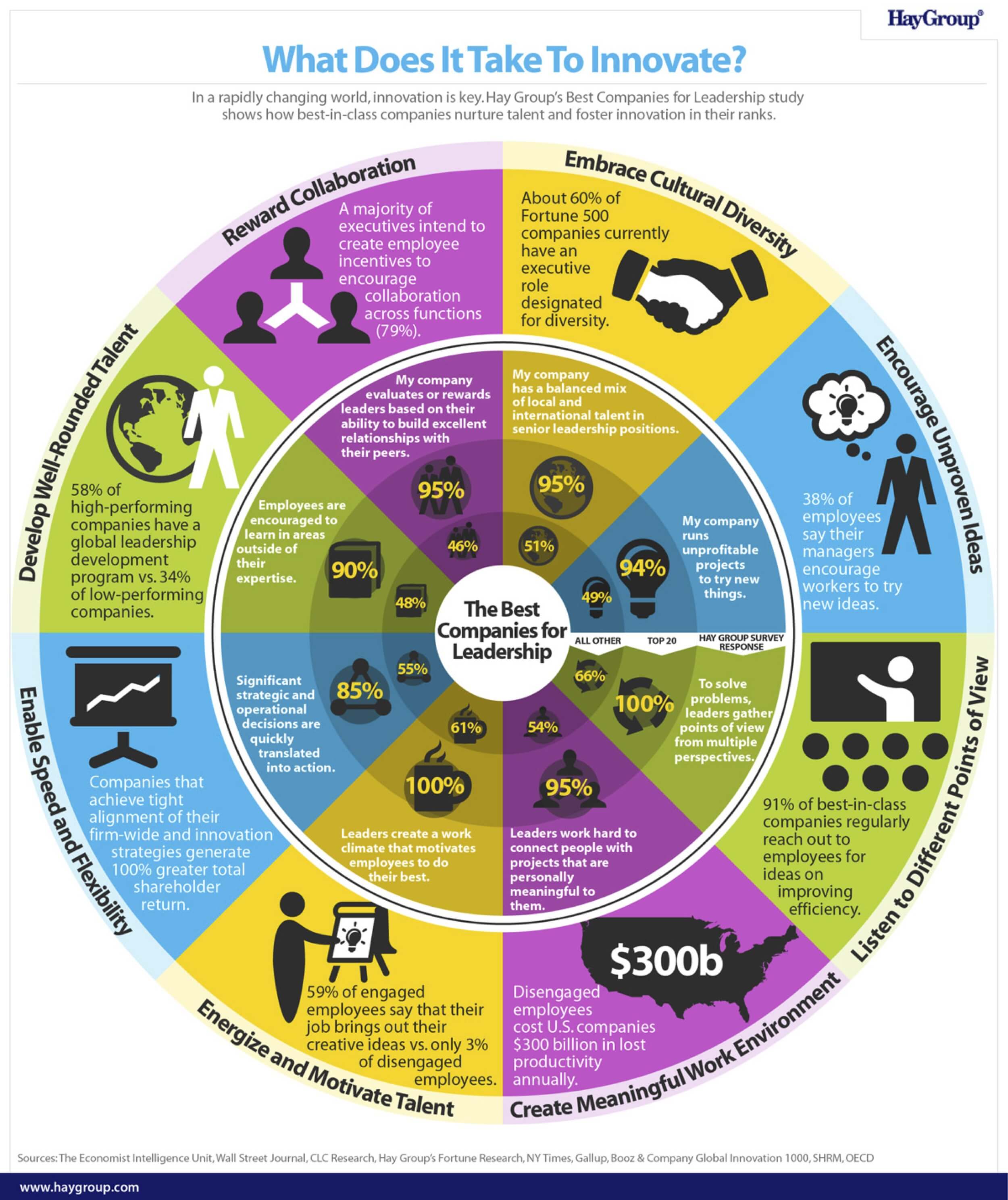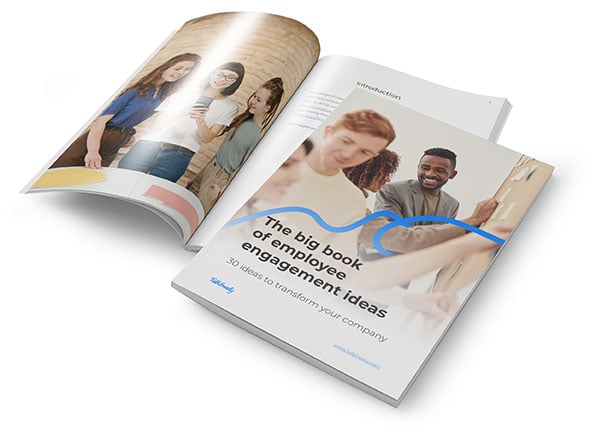What does it take to innovate?
As innovation managers, it's a question we've probably all asked ourselves, and come up with a few answers. The Hay Group asked the same fundamental question in their "Best Companies for Leadership" study, and the results are fascinating. And in the spirit of innovation, the Group displayed the results in a very smart infographic.

The eight 'must haves' for innovation management are defined as:
Embrace Cultural Diversity
Few companies would disagree with the benefits of cultural diversity, bringing different viewpoints and experiences to projects. However, not many appear to walk the talk. According to the survey, 95% of Top 20 companies embrace cultural diversity, as opposed to 51% of the rest.
Encourage Unproven Ideas
One survey response reads: "My company runs unprofitable projects to try new things." How much more innovation would be happening in the UK if all companies thought (and budgeted) like this?
Listen to Different Points of View
The survey indicated that 91% of best-in-class actively sought ideas on improving efficiency, and 100% of Top 20 companies said they did listen to various viewpoints.
Create Meaningful Work Environment
This innovation element comes with a scary statistic; disengaged employees cost US companies around $300 billion annually in lost productivity. However, there is no indication of exactly what a 'meaningful work environment' is. What may be meaningful to one person may not be to another. There is certainly scope for more research on this issue alone.
Energise and Motivate Talent
The recent success of the home nations at the Commonwealth Games has been attributed to the nurturing of home-grown talent leading up to and after the Olympics in 2012. These athletes were already energised and motivated; what they needed was ground level support, access to the right level training and facilities, and a respectful level of funding. Effective, sustainable innovation requires much the same.
Enable Speed and Flexibility
We like the emphasis on speed in this section. As one respondent said; "Significant strategic and operational decisions are quickly translated into action." It is the speed of implementation that allows a company to catch the wave of a trend or make the most of an opportunity as it occurs.
Develop Well-Rounded Talent
The idea of a 'well-rounded education' may be a bit passé, but there is much to be said for developing employees' skill beyond their primary area of expertise. If time or budget don't allow for a systematic development programme to achieve this, much can still be gained by collaboration between different departments or locations, where each can learn from the other. If your business only has one office and few employees, why not consider opening up your innovation programme to customers or suppliers, and learn from them too. A cloud-based innovation platform such as Talkfreely makes such collaboration both straightforward and secure.
Reward Collaboration
Leading on from the point above, the survey reveals how 95% of companies actively reward employees for collaboration across functions. However, the quoted survey response indicates that some companies reward their leaders for building better relationships. This approach rather misses the point; collaboration isn't something that only a manager or senior exec does, it needs to be integrated into the very core of the innovation process so everyone can collaborate, regardless of 'rank'. Otherwise, the rewards are only for the few, not the many…
Overall, it's a stimulating set of ideas relating to ideation and business innovation, and after printing the infographic out and sticking it on the fridge, we've found ourselves coming back from tea breaks mulling ideas over in our mind. See if it does the same for you.
Topics:
Innovation Management







